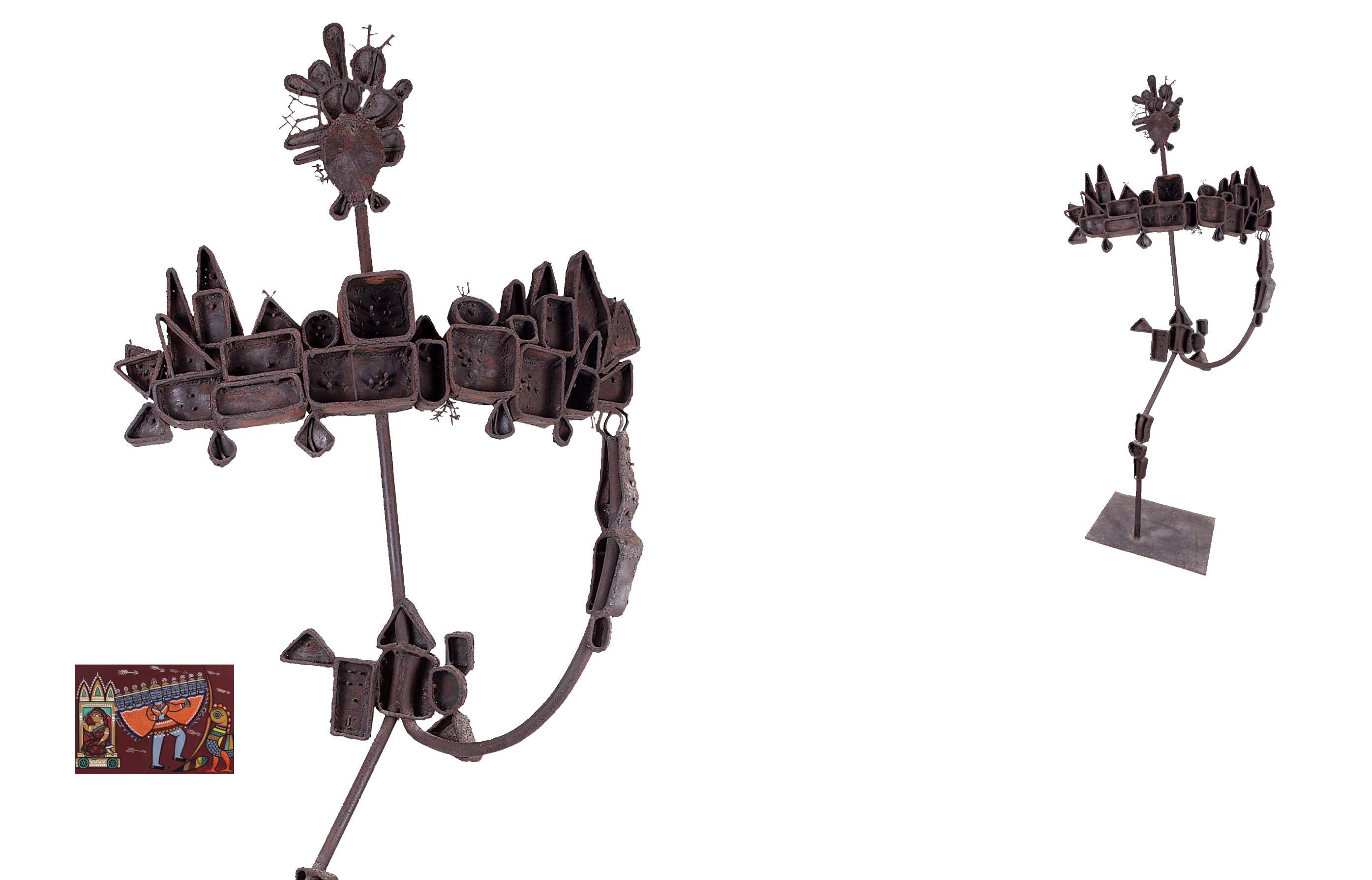

216
Saffronart | Evening Sale
Jamini Roy, Untitled ( Sita, Ravana and Jatayu ), circa 1960s Saffronart, New Delhi, 10 September 2015, lot 21217
Regarded as one of the most important modern Indian
sculptors, Dhanraj Bhagat is known for pioneering
unconventional mediums and sculpting techniques
including
papier‒mâché
, cement and metal casting, wood
and stone carving, ceramics, enamelling on metal, welded
metals and chased, hammered and repoussé textures,
at a time when realism was the norm. Bhagat’s sculptural
vocabulary progressed towards Cubist and Abstract
forms following his encounter with the works of the
Russian‒American Alexander Archipenko, and British
sculptor Lynn Chadwick.
Fromthe 1960s, his geometric forms becamemore “box‒like”
and “architectural.” The present lot, titled
Ravana
,
references
the mythology of the king of Lanka who had ten heads. The
genius of the work lies in the simplicity of composition and
his use of basic geometric forms to evoke the power and
influence of the ten‒headed Ravana. Bhagat’s geometry “is
inspired from the natural forms of plants, trees and flowers
that achieve a transformation through his inner vision in an
amazing variety of forms, as seen in some of his masterly
works... He relates the natural form reduced to its basic
geometric designations like the square, triangle, circle or the
spiral, and assembles them in compositions of rare creativity
in his constructions.” (Pran Nath Mago,
Contemporary Art
in India: A Perspective
,
New Delhi: National Book Trust India,
2001, p. 183)
Bhagat was born in Lahore in 1917, and trained at the Mayo
School of Art in Lahore where he received a Diploma in
82
DHANRAJ BHAGAT
(1917 ‒ 1988)
Untitled (Ravana)
Welded Iron
Height: 82.25 in (209 cm)
Width: 39.75 in (101 cm)
Depth: 22.5 in (57 cm)
Rs 40,00,000 ‒ 60,00,000
$ 60,610 ‒ 90,910
PROVENANCE:
Acquired directly from the artist
PUBLISHED:
Kishore Singh ed.,
Indian Divine: Gods and Goddesses in 19
th
and 20
th
Century Modern Art
, New Delhi: Delhi Art Gallery,
2014, p. 102 (illustrated)
Sculpture. He participated in India’s first three Triennales;
the All India Sculpture Exhibition at the National Gallery of
Modern Art, New Delhi, in 1954; and several shows held by
the Bombay Art Society, the All India Academy of Fine Arts,
Kolkata, and All India Fine Arts and Crafts Society (AIFACS),
New Delhi. In 1977, the Government of India awarded him
the Padma Shri. The Lalit Kala Akademi in New Delhi held
a retrospective of his works the following year. Bhagat’s
sculptures are part of public and private collections,
including the National Gallery of Modern Art, New Delhi,
and the Government College of Art in Chandigarh. Bhagat
passed away in 1988. In 2010, the College opened the
Dhanraj Bhagat Sculpture Park in memory of the artist.


















